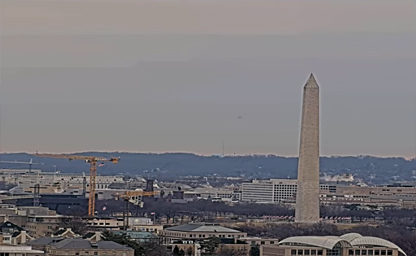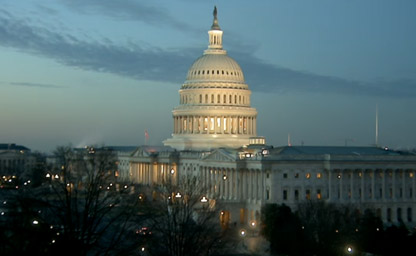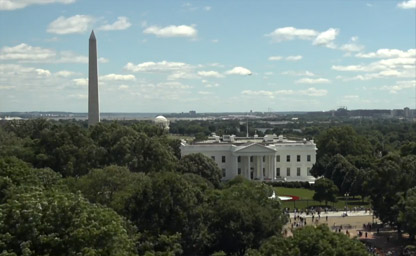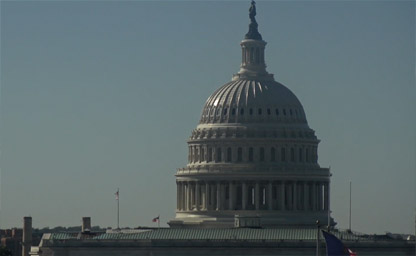
Axis Communications Experience Center
A rooftop terrace with stunning panoramic views of the Potomac River and D.C. monuments

A rooftop terrace with stunning panoramic views of the Potomac River and D.C. monuments

The Senate and the House of Representative

Washington DC, the Capital city of the United States of America

Washington D.C. captures a perfect view of the U.S. Capitol

Several views showing Reagan National Airport (DCA) in Washington, D.C.
IpLiveCams provide a unique opportunity to explore the heart of the United States, offering real-time views of the nation’s capital and its iconic landmarks. From the majestic monuments to the bustling streets, these cameras capture the dynamic spirit and historic significance of the city.
Webcams focused on landmarks such as the National Mall, the Washington Monument, and the Lincoln Memorial allow viewers to witness the beauty of these historic sites. Live feeds often showcase the U.S. Capitol Building and the White House, providing a glimpse into the center of American governance.
Nature enthusiasts can enjoy views of the Tidal Basin, especially during the Cherry Blossom Festival, when the area is adorned with stunning pink and white blossoms. These webcams offer serene scenes of the Potomac River and the lush greenery surrounding the city.
Urban-focused live streams highlight the vibrant streets of D.C., showcasing areas like Georgetown, Dupont Circle, and Union Station. These cameras capture the city’s lively energy, from cultural events and festivals to the daily activities of locals and visitors.
Seasonal changes bring a special charm to Washington D.C., with snow-covered monuments in winter, blooming flowers in spring, sunny summer days, and vibrant fall foliage. Each season offers a different perspective on the capital’s beauty.
Whether you’re exploring Washington D.C.’s rich history, planning a visit, or simply enjoying the sights from afar, live webcams provide an engaging and immersive way to connect with the nation’s capital and its timeless landmarks.
The history of Washington, D.C., is intertwined with the story of the United States itself. Established as the nation’s capital in 1790, the District of Columbia was conceived as a neutral ground to unite the states, avoiding favoritism toward any single state. The location was strategically chosen along the Potomac River, bordered by Maryland and Virginia, and was influenced by George Washington, for whom the city is named.
Before European settlement, the area was home to the Nacotchtank people, a Native American tribe who thrived along the fertile banks of the Potomac and Anacostia rivers. These waterways were central to their trade and sustenance, and the echoes of their legacy remain in place names and archaeological discoveries.
In 1791, French-born architect Pierre Charles L’Enfant was commissioned to design the city. His visionary plan included wide boulevards, public squares, and spaces for prominent government buildings like the U.S. Capitol and the White House. Despite initial challenges, including L’Enfant’s dismissal from the project, his designs laid the foundation for the city’s iconic layout.
The early 19th century saw Washington grow slowly, facing struggles like the burning of the Capitol and White House during the War of 1812. By the mid-1800s, the city became a focal point of the nation’s political and social tensions, particularly over slavery. Washington was a crucial site during the Civil War, serving as a Union stronghold and a hub for the abolitionist movement. President Abraham Lincoln, who resided in the White House during the war, delivered his Emancipation Proclamation in 1863, changing the course of the nation's history.
The late 19th and early 20th centuries marked a period of urban expansion and modernization. Landmarks like the Lincoln Memorial, Jefferson Memorial, and the Washington Monument were constructed, becoming enduring symbols of democracy and national pride. The National Mall evolved into a central axis of culture and history, lined with museums, monuments, and government buildings.
Washington, D.C., played a pivotal role in the civil rights movement of the 20th century. The 1963 March on Washington for Jobs and Freedom, where Dr. Martin Luther King Jr. delivered his famous "I Have a Dream" speech, highlighted the city as a stage for national progress and change.
Today, Washington, D.C., is more than just the political heart of the United States. It is a cultural and historical hub, home to diverse neighborhoods, renowned museums like the Smithsonian Institution, and vibrant traditions that reflect the nation’s multifaceted identity.
Washington, D.C., experiences a humid subtropical climate, offering four distinct seasons that range from hot summers to chilly winters. This climate is shaped by the city’s mid-Atlantic location, influenced by the Potomac River and its proximity to both the Appalachian Mountains and the Atlantic Ocean.
Summers in the capital are typically warm and humid, with average high temperatures in the mid-80s to low 90s°F. July is the hottest month, and occasional heatwaves can push temperatures even higher. Thunderstorms are common in the summer months, providing dramatic skies and a temporary reprieve from the heat. Visitors can enjoy seasonal events like outdoor concerts and festivals, including the popular Fourth of July celebrations.
Autumn is a picturesque time in Washington, D.C., as cooler temperatures and vibrant foliage transform the city’s parks and streets. Daytime highs range from the 60s to 70s°F in September and October, making it a perfect season for walking tours and sightseeing along the National Mall.
Winters in the capital are relatively mild compared to northern states but can still bring occasional snowfall. January, the coldest month, sees average temperatures in the 30s to 40s°F. Snowfall varies yearly, with some winters bringing only a light dusting and others seeing significant storms. Iconic winter activities include ice skating in the National Gallery of Art Sculpture Garden and viewing holiday lights throughout the city.
Spring in Washington, D.C., is famous for the National Cherry Blossom Festival, which celebrates the blooming of the thousands of cherry trees gifted by Japan in 1912. The city bursts into color during this season, with daytime highs climbing from the 50s°F in March to the 70s°F in May. The pleasant weather draws crowds to the Tidal Basin and other outdoor attractions.
While each season has its charm, Washington, D.C.’s diverse climate ensures there is always something to enjoy, whether it’s the vibrant festivals of summer, the tranquil beauty of autumn, the cozy winter landscapes, or the exuberance of spring blooms.
Washington, D.C., occupies 68.34 square miles on the banks of the Potomac River. Its unique status as a federal district sets it apart from the 50 states, governed directly by Congress rather than a state legislature. The city is bordered by Maryland to the north, east, and south, and Virginia to the west, with the Potomac River serving as a natural boundary.
The city’s topography includes gently rolling hills, rivers, and flat lowlands. The Potomac River, one of the most prominent geographical features, defines the southwestern boundary and provides a scenic backdrop for landmarks such as the Georgetown waterfront. The Anacostia River flows through the eastern part of the city, contributing to the area’s waterways and serving as a focal point for revitalization efforts.
Washington, D.C.’s urban layout reflects the visionary design of Pierre L’Enfant. His plan incorporated grand avenues radiating from significant sites like the U.S. Capitol and the White House, creating a sense of grandeur and connectivity. The National Mall, a vast green expanse stretching from the Capitol to the Lincoln Memorial, is the city’s centerpiece, hosting iconic monuments, museums, and events.
Beyond its monumental core, the city features diverse neighborhoods with distinct cultural and architectural identities. Georgetown, one of the oldest neighborhoods, is known for its cobblestone streets, historic rowhouses, and vibrant waterfront. Dupont Circle boasts a lively arts scene, while Capitol Hill is home to charming brick homes and the U.S. Capitol.
Rock Creek Park, one of the nation’s first urban parks, spans over 1,700 acres in the heart of the city, providing trails, picnic areas, and natural habitats for wildlife. The park connects with the Chesapeake and Ohio Canal, a historic waterway that stretches into Maryland, offering a tranquil escape from the bustling city.
Washington, D.C., also sits near the Piedmont Plateau, with the Appalachian Mountains to the west and the Atlantic Coastal Plain to the east. This proximity allows for easy access to diverse landscapes, from hiking in Shenandoah National Park to exploring the Chesapeake Bay.
For a unique perspective on the city, take a nighttime monument tour. The illuminated landmarks, such as the Lincoln Memorial and the Washington Monument, provide a breathtaking view and a quieter atmosphere compared to daytime crowds.
An interesting fact about Washington, D.C., is that the city’s streets follow a distinctive grid pattern, with diagonal avenues named after states intersecting the grid at traffic circles and squares. This design was intended to make navigation easier and to reflect the unity of the states within the federal district.